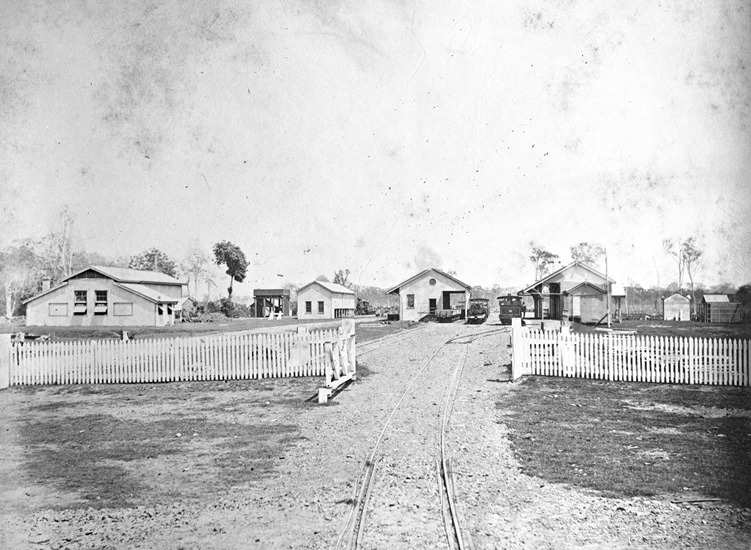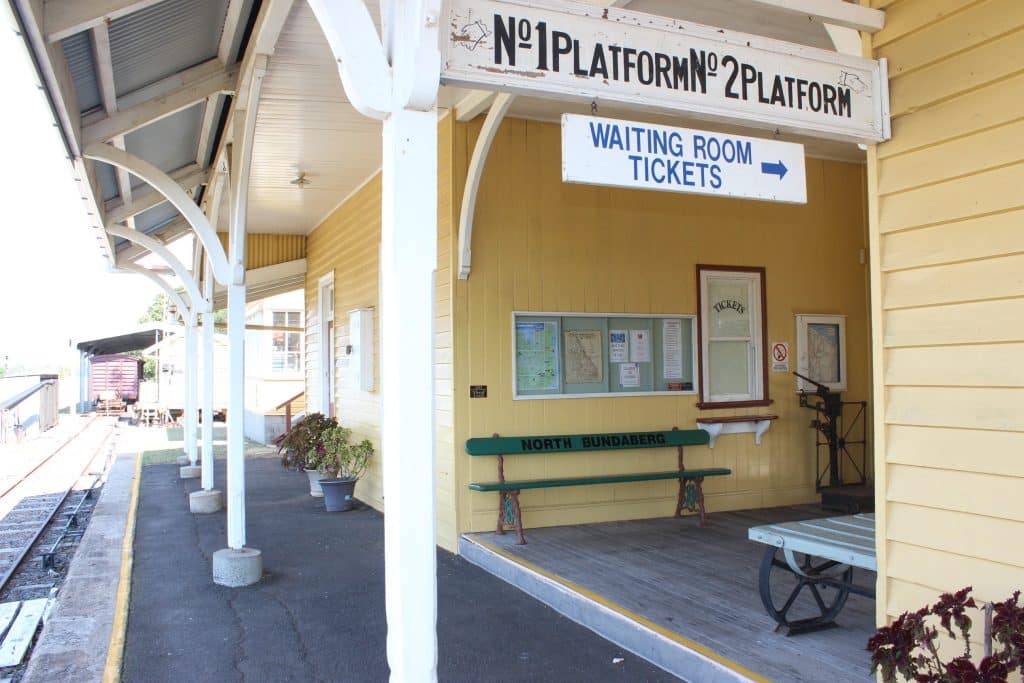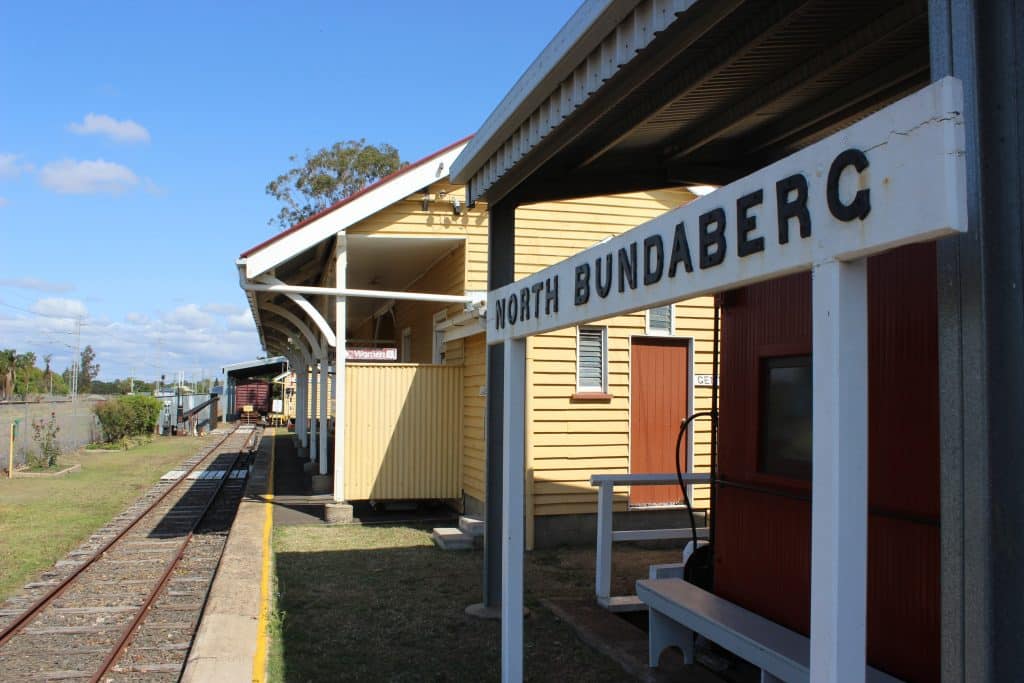
Constructed in the 1880s, the North Bundaberg Railway Station stands as a testament to the region’s rich history and its pivotal role in the economic development of Bundaberg.
Serving as the terminus for the Bundaberg-Mount Perry Railway, this historic station played a vital part in the establishment of railways and the growth of the local community.
Listed among Bundaberg Regional Council’s Local Heritage Places the North Bundaberg Railway Station holds historical importance, representing the evolution of the region.
It’s construction came after a response to the growing need for transportation, with calls for a railway connecting Mount Perry to North Bundaberg made as early as 1872.
The significance of the railway became further evident when Bundaberg emerged as the port for the Mount Perry copper mine.
At that time, a rudimentary road was the sole connection between the mine and Bundaberg.
To meet the demand, a railway was constructed, linking the mine to North Bundaberg.
However, the absence of a traffic bridge necessitated the construction of the first wharves on the north bank, where the Bundaberg railway station was established.
Initially the only railway station in town, it played a pivotal role in facilitating trade and transportation.
A railway line for the times
In its early days competition arose between Bundaberg and the well-established port of Maryborough, both vying to secure the railway.
Bundaberg emerged victorious however in an ironic twist, the copper mine’s output began to decline shortly after the completion of the railway.
Despite the decline in copper production, the railway proved invaluable in facilitating other industries.
The Bingera Sugar Mill, established in 1885, utilised the railway for transporting sugar, timber, and agricultural produce from the surrounding districts.
The line also connected to the Waterview sawmill and sugar mill via Perry Street in 1893, further increasing the line’s importance and traffic.

The railways comes to a close
Operating through the mid-twentieth century, the Bundaberg-Mount Perry railway line witnessed a decline in traffic, leading to its closure.
The first section of the line, between Mount Perry and Tirroan, ceased operations in 1960.
Eventually, the entire line closed in 1964, with the North Bundaberg station ceasing operation in 1986.
To preserve its historical significance, the North Bundaberg Railway Station was moved and transformed into a railway museum.
The complex, located at 28 Station Street, boasts typical timber and tin structures, featuring gable roofs in line with the standard Queensland Rail design of its construction era.
The station building itself stands as a low-set weatherboard structure on stumps, sporting a corrugated iron clad gable roof.
Today, the facility is cared for by passionate members of the Bundaberg Railway Historical Society who recently restored a 100-year-old guard’s van, which is one of only two still in existence in Queensland.
Find out more about the North Bundaberg Railway Station here.

Related stories: History of the Alexandra Park rotunda





Ben said that the train drivers did the changeover at North Bundaberg. they slept at his Auntie’s premised across the road in station street.
Ben said in WW2 the troop trains would stop there. he would collect some money and rush to the pub, get beer, race back and hand it to the soldiers. this one time, the train started to pull out a tiny early. the last carriage was always the hierarchy and they wanted Ben to hand the beer to them, so he ran hard and passed the beer to the next carriage where he knew the troops would get a beer. his home then was 11 station street.
Merv, there were a lot of Railway men and families that lived close proximity the Northside of Bundaberg. Deep affection and historical.
Fiona, any of the old family names down Station street know exactly that. have a look at the North Bundaberg School Enrollment Records. the alleged expert advisors on Heritage would never think of looking. how many people would know that to make room for the rail required the legal excision of land from the Tantitha Run and that Issac Moore then did some land subdivision to the west of Mt. Perry Road. of course, not to forget Hanbury Street and the importance of that road. Martha Harvey run the accommodation and she traces back to one of the very old settling families. Eleven Station Street was Hopton as you probably know. Two sisters lived as neighbours.